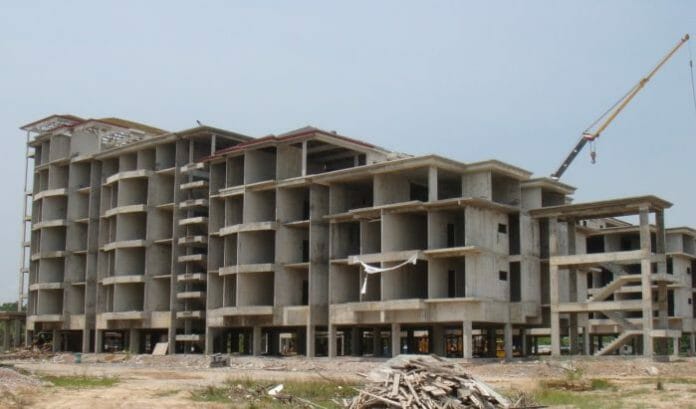Kenanga Investment Bank (Kenanga) maintains a NEUTRAL stance remaining cautious on the property sector due to oversupply, high household debt, elevated interest rates and weakened consumer sentiment, which could further be dampened by escalating living costs.
In its Property Sector Update today (Apr 30), Kenanga said there is optimism in the Johor property market fuelled by the Special Economic Zone initiative and seamless public transport connectivity upon the completion of the Johor Bahru-Singapore Rapid Transit System in 2026.
Although developers continue to tread cautiously, we see a bright spot in the affordable housing segment and developers that have strong foothold in matured townships.
Kenanga sector top pick is MKH (OP; TP: RM2.11) given their focus on affordable units priced below RM500k.
Multiple challenges. Kenanga continues to hold a neutral stance on the sector’s outlook, despite the ongoing challenges posed by oversupply, high household debt, elevated interest rates, and diminished consumer sentiment resulting from high inflation and escalating cost of living. Amidst these challenges, there are notable shifts and improvements within the sector, particularly in the reduction of overhang units and the focus on affordability in residential developments.
According to BNM’s latest data as of Jan 2024, industry approval rates appear to have eroded notably to 40.0% (Dec 2023: 43.4%; Dec 2022: 43.5%).
That said, Kenanga gathered the January readings are typically lower as banks may be more selective with their early-year admissions. There has also been a gradual rise in overall applications possibly fuelled by the influx of affordable home products which are more assessable to the wider market.
Kenanga opined that subsequent approval readings may only range bound between 40%-45% (being the recent years’ average) as the abovementioned inflationary pressures could invite delinquencies should loan approvals become more lenient.
On the other hand, household debt-to-GDP readings of 84.2% in 2HCY23 (81.0% in 2HCY22) is lower than pre-pandemic levels of c.88%. While the rise could be attributed to higher average interest rates, the rising inflow of mortgage books may also contribute to the increase.
A reduction in overhang units, with a trend towards affordable housing. NAPIC’s latest data for CY23 reveals a reduction in total overhang units, with the number standing at 121,568 (CY22: 142,475 units) and concentrated in Kuala Lumpur, Johor, and Selangor.
Notably, 61% of newly launched residential properties are priced below RM500k, signalling a growing preference for affordable housing options.
Meanwhile, developers are adapting to market dynamics, offering a mix of products with a heightened emphasis on affordability to cater to first-time house buyers and align with shifting consumer preferences which are partially inclined by ongoing economic uncertainties.
Over the last two years, there has been a gradual but consistent increase in sales, indicating a market that is growing moderately rather than aggressively. The expanding demographic of young people also suggests a rise in first-time house buyers, injecting momentum into the housing sector.
Government initiatives specifically tailored to support house buyers offer prospects for a more balanced market, fostering accessibility and stability, which provides confidence to buyers, sellers, and investors, reducing uncertainty and the risk of significant financial losses associated with volatile price movements.
Nonetheless, amidst these positive trends, challenges persist as the cost of living continues its upward trajectory while incomes remain stagnant.
Outlook. Looking ahead the sector is expected to maintain its focus on affordability, driven by factors such as population growth, urbanisation, and increasing demand for reasonably priced units. Transit-oriented developments are likely to gain traction, particularly in the Klang Valley, as buyers seek convenient commuting options. Despite facing ongoing challenges, like economic shifts and regulatory changes, the sector is showing resilience and adaptability.
Johor property market: Caution. There is optimism in the Johor property market fuelled by the Special Economic Zone initiative and seamless public transport connectivity upon the completion of the Johor Bahru-Singapore Rapid Transit System in 2026. Kenanga believes it will take a lot more than these to transform Johor Bahru into a thriving world-class metropolis that could draw in large population both from other parts of Malaysia and across the Causeway.
Kenanga’s field checks show that developers there continue to tread cautiously as it takes time for these developments to translate into actual sales for the developers.
Top Pick. Kenanga’s favourite within the sector is MKH as they maintain a favourable perspective because of their emphasis on providing affordable homes priced below RM500k and their distinctive transit-oriented developments are expected to continue drawing interest from potential buyers.
Additionally, the group’s nearly net-cash position offers robust flexibility regarding its financing options, especially in the event of potential expansion in their primary business segments.









